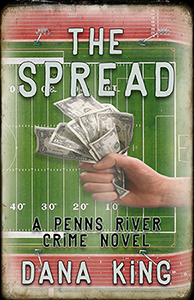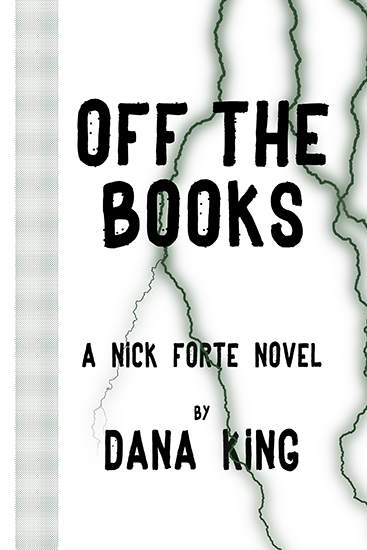The Beloved Spouse™ and I have wanted to go to an event at
Yonder since it opened. Life (read: covid) conspired to prevent such an
excursion until last week. It was worth the wait. (I’ll not get into the fact
that we shouldn’t have had to wait so long. Thanks, you unvaccinated assholes.)
For those unaware, Yonder – Southern Cocktails and Brew, is
a drinking establishment and meeting place in Hillsborough, NC that has been
described as Hillsborough’s living room. Owned and operated by Eryk Pruitt and his
lovely wife Lana Pierce (of whom Eryk is wholly undeserving), Yonder holds
regular musical and literary events, including Noirs at Bars a few times a
year. (If you unfamiliar with Noir at the Bar, look it up. This is One Bite at
a Time, not fucking Wikipedia.)
Last Thursday (October 21) the good people at Yonder (and Eryk)
held a special Noir at the Bar to commemorate Halloween by inviting several
horror writers along with a top shelf cast of crime authors. The result was the
best Noir at the Bar I’ve ever been to, and I’ve been to a goodly number. (Read
at several, and hosted one, too. Yonder’s horror night was still best.)
A few general observations before I get specific.
·
Those typically associated with crime all had an
element of crime in their stories, the horror writers, not so much.
·
Crime writers tend to tell their stories through
dialog; horror writers are typically more narrative-based. This is not a hard
and fast rule.
·
I have never been to a Noir at the Bar where the
performance level was close to this high. Not only were all the stories
outstanding (let’s face it, N@Bs are anthologies, so maintaining a uniform
level of quality can be an issue), the readings were uniformly excellent. No
one just read; they performed, and they all nailed it.
This was among the fastest two-and-a-half hours I ever
spent.
Everyone deserves credit. I had three beers, so I don’t
remember the exact sequence in which everyone read, so here’s the list in
alphabetical order.
·
Nathan Ballingrud read the opening of a story
about a bookseller who clearly deals more than paperbacks out of the back room.
What, we don’t know. I’ve already ordered his book so I can see what happens
next.
·
Natalia Barron’s excerpt was as dark as its
subterranean setting would suggest, and left everyone wondering where the story
would go.
·
Michele Tracy Berger read a cautionary tale of
the potential dangers of moving from one fast food employer to another.
·
S.A. Cosby supplied a harrowing tale of the backstory
to a horrific shooting binge.
·
Rob Hart told of a new restaurant experience in New
York City that will give you pause before going to another potluck dinner.
·
Jamie Mason’s story talked about one
supernatural entity rousing itself to fight another, more malevolent one.
·
Katy Munger took the Halloween theme seriously,
telling a story that combined laugh out loud humor with a disquieting warning
of who can hide in plain sight on Halloween.
·
Eryk Pruitt creeped everyone out with a tale of
a side of dom/sub relationships people never think of.
·
Todd Robinson read of redemption and forgiveness
after a horrific tragedy.
·
Cadwell Turnbull’s vampire story taught the dark
side of eternal life.
I’m not a horror guy, so I was unfamiliar with the horror
writers who read that night, and was profoundly impressed at the quality of
their stories, and writing, compared to what I remembered from my young
adulthood, when I read a fair amount of it. A personal re-assessment of the
genre may be in order. They were also all new to the Noir at the Bar
experience, so it was a treat to see how much fun they had in the company of
people who love to write and read.
No assessment of the festivities would be complete without
mention of the host, Tracey Reynolds. I’ve hosted a Noir at the Bar and can
attest that, while it’s not particularly difficult, it’s not something you just
roll out of bed and do. One must prepare, and an ability to read an audience
and pace the performance is imperative. I’ve never seen anyone do it better
than Tracey. (And no one – no one – handles a microphone condom better.)
In addition to all the above (like that wasn’t enough), this
was an opportunity for The Beloved Spouse™ and me to reconnect with some good
friends face-to-face. The trip would have been a success had the reading
flopped, just so we could see Eryk, Lana, Todd, and Shawn to trade hugs, news,
and insults. I knew Rob Hart slightly from social media, and it was a treat to
get to meet him in person, as well.
As it was with everyone I met. I made a point of telling the
writers I didn’t know beforehand how much I enjoyed their work, and not just
because I know how good that feels after such an event. I genuinely did enjoy
their stories, and I hope this becomes an annual event at Yonder.

